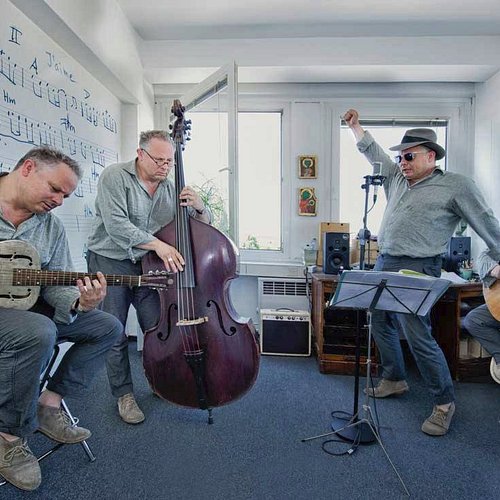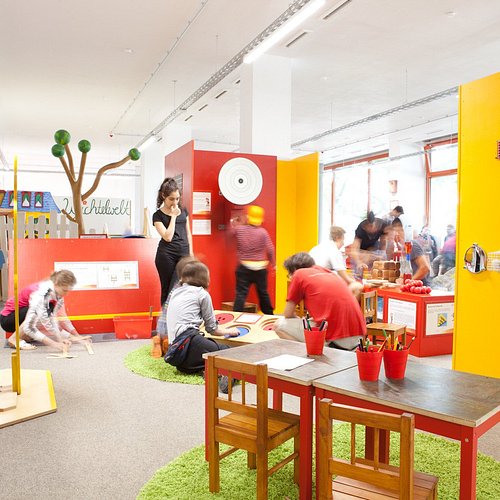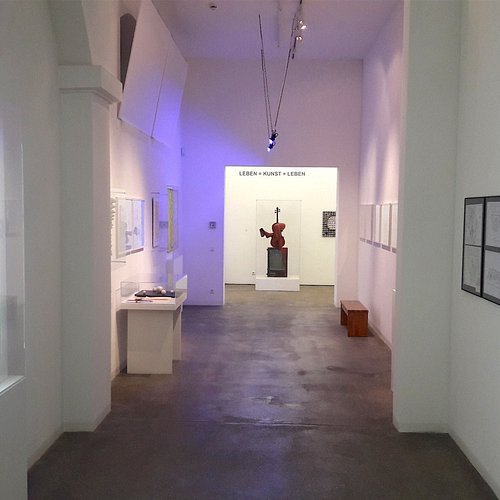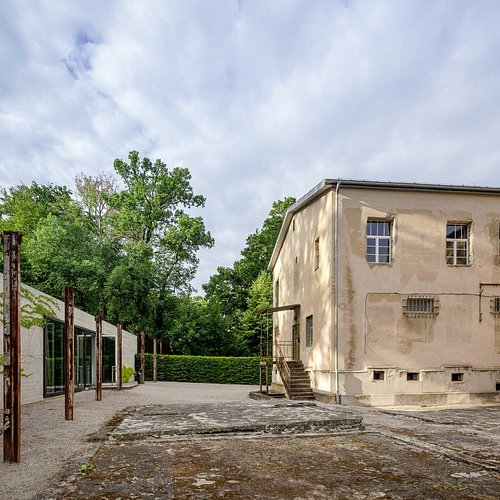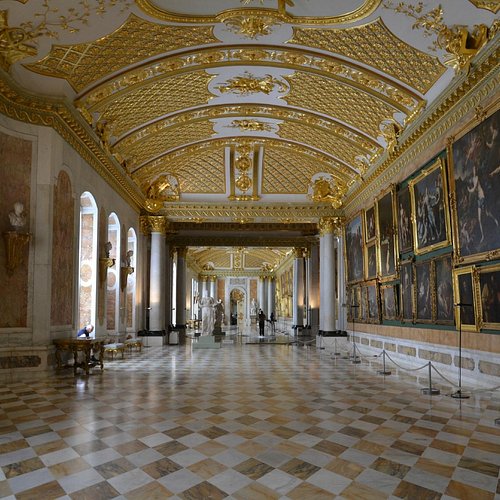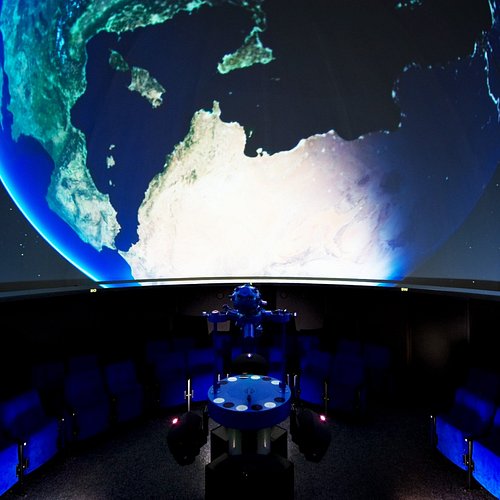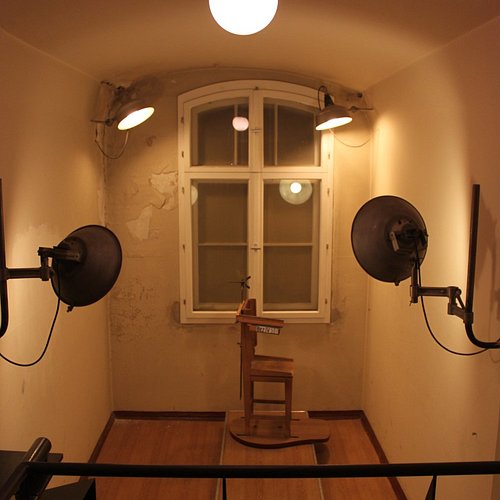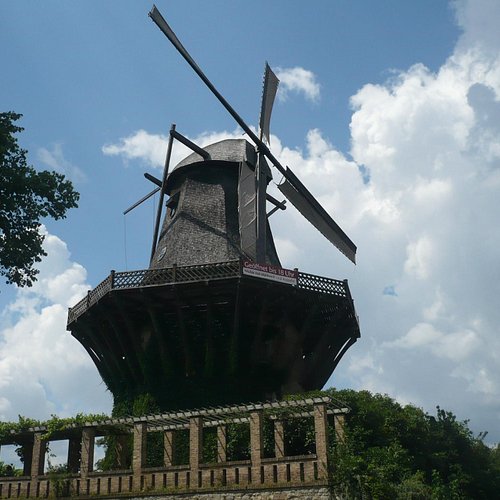The 10 Best Museums in Potsdam, Brandenburg
Potsdam was the residence of the Prussian kings and German Kaisers until 1918. It is the site of the parks and palaces of Sanssouci, the largest World Heritage Site in Germany. The city is now the capital of the German federal state of Brandenburg and a home to three public colleges and a major film production studio.
Restaurants in Potsdam
1. Kunsthaus Rechenzentrum Potsdam
2. Extavium
Overall Ratings
4.5 based on 15 reviews
Extavium: Knowledge at your fingertips: The Extavium offers an outside-the-classroom-experience for anybody who is or wants to become interested in the natural sciences. This experience will spark everybody's interest in the natural sciences and give insight into the complex processes of nature. With its interactive exhibition and many various workshops the museum has been an essential part of the scientific community in and around Potsdam for ten years. Is it possible to freeze your own shadow? And what do marshmallows have to do with air pressure? These are only some of the questions that you will find answers to when visiting the museum. All objects within the exhibition can be explored and lead to unexpected and surprising results.
3. Museum FLUXUS+
Overall Ratings
4.5 based on 6 reviews
A museum specialising in the Fluxus movement is unique within Potsdam's and Berlin's - museum scene. Nowhere else in the region can one see such an extensive collection of artworks, correspondence, objects, relics and films connected with this art movement. This collection is supplemented by an extensive display of artworks by Wolf Vostell, who was also a member of the Fluxus movement.
4. Gedenk- und Begegnungsstatte Leistikowstrasse
Overall Ratings
4.5 based on 32 reviews
The Leistikow Strasse memorial commemorates the former Soviet military counterintelligence central remand prison that was once located here. There are few historical prisons so authentically preserved. While the mass cells and facilities in the upper floors reveal the conditions in the 1970s, the primitive basement cells with their crude wooden benches testify to the privations endured by prisoners well into the 1950s. Numerous inscriptions carved into the walls by detainees from that time speak of isolation and desperation as well as resilience. The permanent exhibition is illustrated with photographs, endowed with historical artefacts and equipped with media stations that reveal the prison’s story within the wider drama of the Cold War. Fifty biographies have been unearthed, showing just how many different people became inmates, from Nazi-era perpetrators to spies – both real and falsely accused - and Soviet army deserters. Some of them give eyewitness accounts of their fates.
Reviewed By 637JonnyW - Berlin, Germany
I booked both tours, which our fantastic guide Armin combined into one big tour for us. Armin gave us a tour of the former sealed-off Soviet town within Potsdam, gave us a wider context before the Soviets arrived, explained how the prisons worked, gave detailed biographies of some prisoners, and how a lot of the information available to us today came from one important defector. Our group was made up of around 15 professional tour guides working in Berlin and Potsdam, and Armin impressed even us! Couldn't recommend booking a private tour here enough. Thanks, Armin!
5. Bildergalerie
Overall Ratings
4.5 based on 96 reviews
Reviewed By ChuckBrooks
The main hall of this building is, in a word, stunning. The ceiling, the floor, the paintings, the sculpture, are as beautiful as any palace in France or elsewhere in Germany. I have seen most of the palaces in Germany, as well as Versailles outside of Paris. Do not miss this.
6. URANIA-Planetarium
Overall Ratings
4.5 based on 6 reviews
7. Stiftung Gedenkstatte Lindenstrasse
Overall Ratings
4.5 based on 29 reviews
Reviewed By SusaMasa - Helsinki, Finland
We were surprised by the size of this museum. The whole prison has been converted to a museum. The exhibition explains in detail the history of the building and stories of the prisoners. It's a very powerful museum and memorial site. Ask for a booklet in English from the ticket office. The booklet will give you lots of information and guide you through the exhibition. To get a glimpse of the the museum, watch our video of it: Youtube Susa and Masa around the world
8. Museum Barberini
Overall Ratings
4.5 based on 293 reviews
With the opening of the Museum Barberini in 2017 Potsdam gained a new art museum. Exhibitions range from Old Masters to contemporary art, with a major focus on impressionism. Based on the works from the collection of Hasso Plattner, the museum’s benefactor and patron, the Museum Barberini presents three exhibitions each year with loans from international museums and private collections. The exhibitions are prepared at conferences with renowned academics and displayed in new contexts alongside smaller shows. Digital offers like the Barberini App and a media wall, together with a diverse events and education program, make art more accessible for everyone.
Reviewed By MLF-traveller - Palo Alto, United States
Incredible opportunity to see a wide range of original Van Gogh Still Life's including some of his earliest, most significant and a selection from his enormously productive final months. The claim that Still Life's provide a structured narrative of Van Gogh's art and life, to me, is fully validated and proven in this one-of-a-kind exhibition. Completely worth the trip to Potsdam!
9. Filmmuseum Potsdam
Overall Ratings
4.0 based on 119 reviews
Reviewed By gregoryjarosch50 - Vilnius, Lithuania
Movie making can be likened to flirting with one or more cameras aimed at you where you are trying to show off your best or worst sides or brightest or saddest moods in a make believe or realistic setting - dramatic, comedy, or something in between, on a set or on location. "Silence, and action ......and cut" and so it goes a collection of short segments combined together to produce the tear jerker or belly laughter, anger or happiness. This is where the Filmmuseum Potsdam comes in set as it is so close to where momentous decisions were being made that would impact the world for decades to come. The various collections are housed in a permanent and a feature collection sections over two floors. There is a line up of about the 20 best known male German stars and likewise 20 best known female German stars, from the earliest to current times. On one side you see the stars as young and on the other side as much older. There is a camera equipment and stage sets and costumes exhibitions on one side of the hall and on the other side a collection of posters, photos, posters and other memorabilia. The beauty of such museums is that one can come to a particular exhibit and contemplate what happened real time when the movie was being shot. There is an attached full sized (like the large olden type cinemas) cinema showning movies and you can wander in and out from museum proper to cinema as your fancy takes, being careful not to disrupt other patrons. A lot of effort goes into making movies and especially to make them look effortless in final product. The techniques and equipment and stories of the people who made and make movies are a rich source of cultural introspection that particularly foreigners can appreciate. Go see the way movies were and are made and let your imagination loose. And action Greg J
10. The Historic Windmill
Overall Ratings
4.0 based on 354 reviews
Reviewed By dhs9909 - Bern, Switzerland
The Historische Mühle is another scenic landmark at Sanssouci Park. You would think of yourself being in the Netherlands once you see the mill

